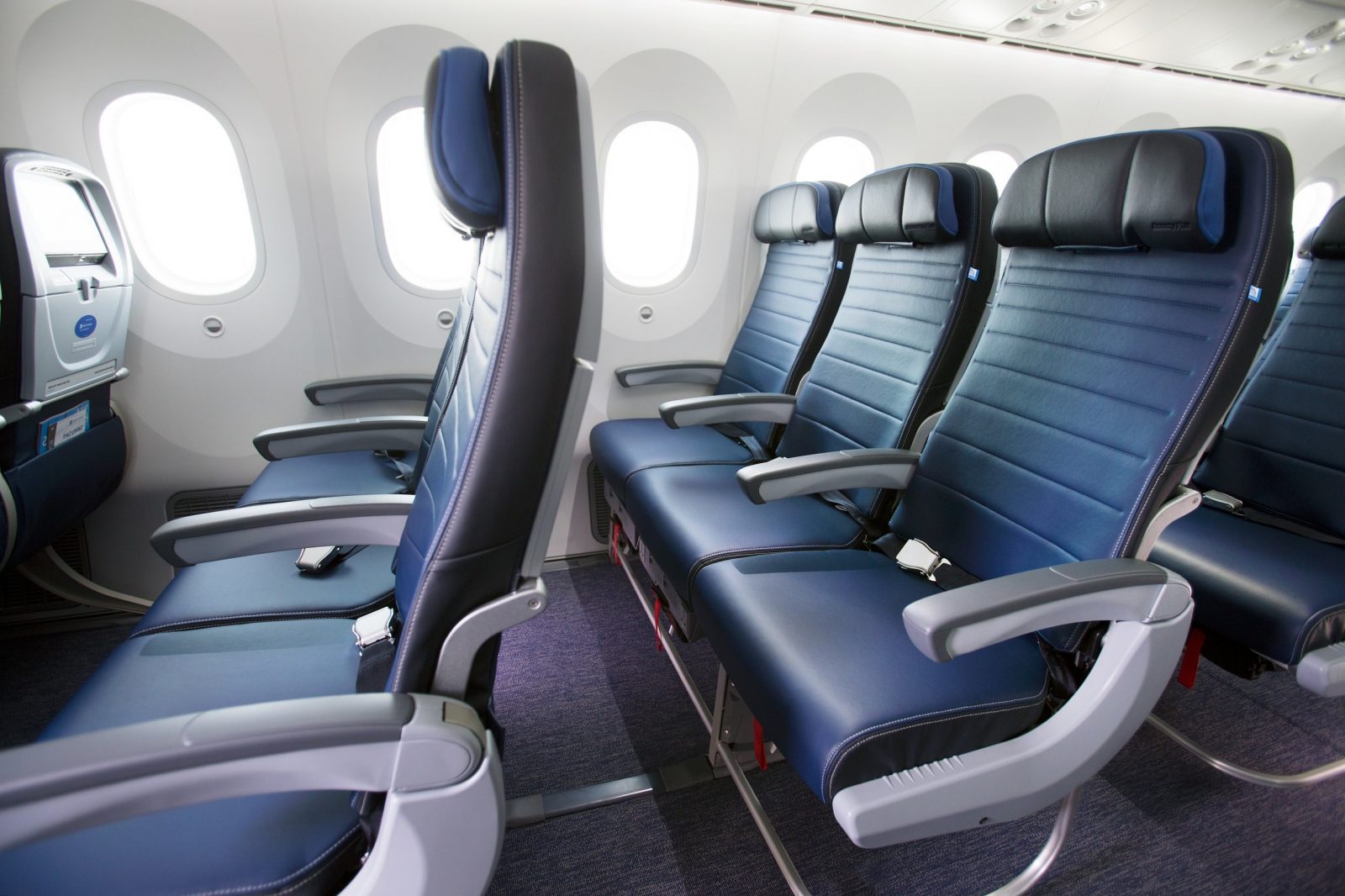
New research from the U.S. Department of Defense which made used coughing mannequins and biodefense sensors has concluded that the chance of catching COVID-19 on an airplane is almost non-existent – so long as everyone is wearing a face mask.
The research, which was carried out on a United Airlines Boeing 777 and 767, also found the risk remained incredibly low even if every single seat is occupied.
Described by United as the “most comprehensive study on aircraft airflow that’s ever been done”, the researchers completed over 300 tests both inflight and on the ground to determine the risk of catching COVID-19 onboard an aircraft. Researchers were particularly interested to learn how the risk might increase for passengers sitting in the same row as an infected person, as well as in the rows forward or aft.
When seated and wearing a face mask, the study found that the chance of infected particles passing into someone else’s breathing zone was just 0.003% per cent. Infectious particles that did get into the aircraft cabin were completely filtered out within just six minutes. Even surface contamination from droplets was found to be remarkably low.
High air exchange rates on both aircraft models, as well as the downward ventilation design in which air is pushed from ceiling to floor rather than front to back, along with HEPA filters were all cited as reasons for why the risk of airborne particle infection is so dramatically low onboard an aircraft.
The results are in: Your risk of exposure to COVID-19 is almost non-existent on our flights (yes, even on a full flight).
— United Airlines (@united) October 15, 2020
Learn more about the robotic mannequins, biodefense sensors and the results of this @DeptofDefense study here: https://t.co/NkqsW8r16A pic.twitter.com/KRMCrpPfGX
What the researchers found will likely vindicate United’s decision not to pursue a policy of social distancing onboard it’s aircraft and instead sell every available seat. In contrast, Delta Air Lines, jetBlue and Southwest have all heavily promoted their middle seat blocking policies to increase customer confidence.
One United executive has previously described blocking middle seats as little more than a marketing gimmick. The Chicago-based airline now says its third-quarter revenue performance will be the best amongst its main U.S. competitors.
Despite some high-profile studies that have pointed to the risk of inflight COVID-19 transmission, there have been just 44 cases of COVID-19 in which transmission might have happened onboard a commercial aircraft since the start of 2020. In that same time, some 1.2 billion passengers have traveled by air.
Most aircraft are fitted with HEPA filters that can filter out 99.9 per cent of airborne bacteria and viruses according to industry leaders. Air is exchanged up to 30 times per hour and seat backs act as an effective barrier to stop particles spreading.
“The risk of a passenger contracting COVID-19 while onboard appears very low,” commented Dr. David Powell, medical advisor to the International Air Transport Association (IATA).
“With only 44 identified potential cases of flight-related transmission among 1.2 billion travelers, that’s one case for every 27 million travelers,” he continued.
While acknowledging that might be an underestimate, Dr Powell explained: “Even if 90% of the cases were un-reported, it would be one case for every 2.7 million travelers. We think these figures are extremely reassuring.”
United Airlines launched pre-flight rapid COVID-19 testing on flights from San Francisco to Hawaii on Thursday. Costing as much as $250, the tests will allow passengers to skip an otherwise mandatory 14-day home quarantine on their arrival into Hawaii.
Related
Mateusz Maszczynski honed his skills as an international flight attendant at the most prominent airline in the Middle East and has been flying ever since... most recently for a well known European airline. Matt is passionate about the aviation industry and has become an expert in passenger experience and human-centric stories. Always keeping an ear close to the ground, Matt's industry insights, analysis and news coverage is frequently relied upon by some of the biggest names in journalism.






